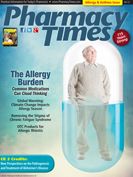Publication
Article
Pharmacy Times
Safety Standards Needed for Dosing of Liquid Medications
Author(s):
Despite attempts at standardization, these preventable and often devastating errors still occur.
Despite attempts at standardization, these preventable and often devastating errors still occur.
Confusion between teaspoons (tsp) and tablespoons (tbsp or tbs), milliliters (mL) and teaspoons, and even drops (gtts) and mL contribute to dose and measurement errors involving liquid medications. These errors can lead to serious adverse events and patient harm.
For example, a 2-year-old child with an ear infection recently received a 5-fold overdose of the antibiotic cefdinir (Omnicef) for 3 days. The family’s pharmacist accidentally typed a label that gave instructions to give the child 3.5 teaspoonfuls of antibiotic daily for 10 days instead of 3.5 mL daily for 10 days. By the 4th day of treatment, only 5 mL was left in the bottle, so the mother called the pharmacy.
This medication error resulted in the child experiencing voluminous amounts of diarrhea as well as a yeast and possible fungal infection of the vaginal area. The physician also monitored the child for signs of a recurrence of a previous Clostridium difficile infection. This case is just one of many overdose mixups reported to the Institute for Safe Medication Practices (ISMP) National Medication Errors Reporting Program, with most resulting in patient harm.
The traditional use of teaspoons to express doses of liquid medications has, in a sense, conditioned health care practitioners to anticipate dosing instructions expressed in terms of teaspoons. As a result, a prescriber may accidentally write a prescription for a number of teaspoonfuls when a number of mL was intended or, as in the case above, a pharmacist may accidentally type a label that says teaspoonfuls when the dose was prescribed in mL.
It also appears that computer systems may contribute to errors. For efficiency, some pharmacy systems (and prescribing systems too) may default to a dose expressed in teaspoonful amounts in the directions when oral liquids are selected. If this happens when a mL dose was intended, pharmacists and pharmacy technicians may not remember to change the instructions back to mL when teaspoons automatically appear.
Safe Practice Recommendations
It’s time to standardize to 1 way of dosing and measuring liquids—use of the metric system where volumes are in mL. In October 2011, ISMP issued a statement on use of metric measurements to prevent errors with oral liquids (www.ismp.org/pressroom/PR20110808.pdf).
Other organizations, such as the Consumer Healthcare Products Association and the Centers for Disease Control and Prevention, also have drawn attention to the need to move to sole use of the metric system or include both measurements with drug dosing instructions. The health care industry, including practitioners, needs to acknowledge the risk of confusion when using nonmetric measurements, especially with oral liquid medications. Steps such as the following should be taken to help prevent errors:
- Regulators and the pharmaceutical industry should use only metric units as the calibrated units of measure marked on product labeling and dosage delivery devices.
- Pharmacy and e-prescribing software vendors should remove and prevent the use of “teaspoonful” and other nonmetric measures for medications in computer systems.
- Health care practitioners, including prescribers, should cease use of prescription orders and patient instructions that use “teaspoonful” and other nonmetric measurements, including any listed in pharmacy and e-prescribing computer systems.
- Express doses for oral liquids using only metric weight or volume (eg, mg or mL)—never household measures, which also measure volume inaccurately.
- Take steps to ensure patients have an appropriate device to measure oral liquid volumes in mL.
- Coach patients on how to use and clean measuring devices. Use the “teach back” approach, and ask patients or caregivers to demonstrate their understanding.
It may take a generation to fully accomplish the complete standardization to metric dosing, but the time to start is now.
Dr. Gaunt is a medication safety analyst and the editor of ISMP Medication Safety Alert! Community/ Ambulatory Care Edition.







